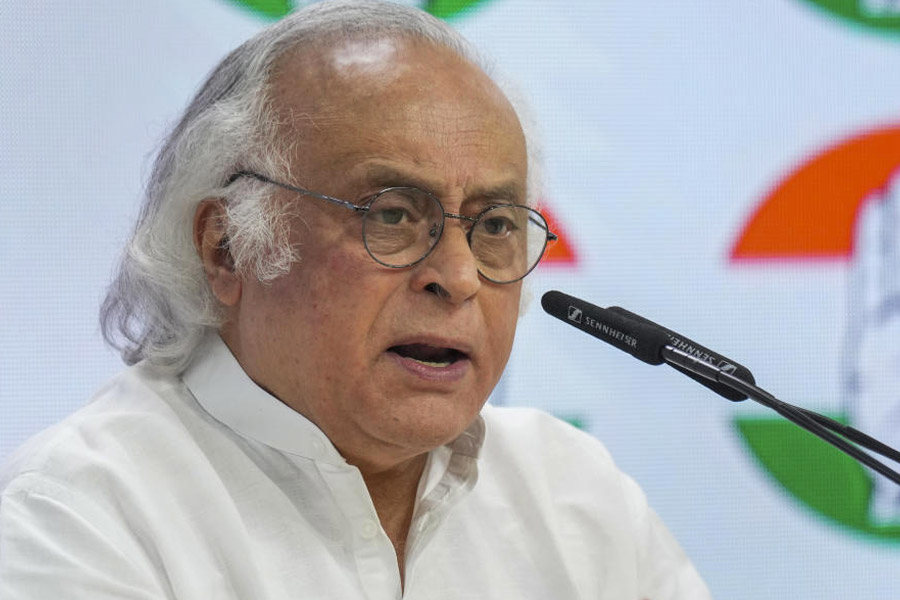 |
| Girls take the shelter of an umbrella as the sun beat down in Patna on Wednesday. Picture by Nagendra Kumar Singh |
Patna, July 13: The weather has been sultry in the past few days. But monsoon is not over. Only it has weakened a bit.
The residents of the capital and elsewhere in the state would have to bear with the humidity for at least four more days. Barring localised rainfall at a few places, most parts of the state have witnessed a dry spell in the past week. The dry spell has led to an increase in the day temperature level, which is hovering around the mid-30s.
“As the relative humidity level is around 70 per cent, people feel uncomfortable when the temperature touches 35°C or more,” Patna Met office director Animesh Chanda told The Telegraph today.
Terming the lull in monsoon a normal phenomenon, Chanda said the dry spell has been caused because of southward shift of monsoon trough line and lack of formation of a favourable system in the Bay of Bengal.
When a favourable system develops in the Bay of Bengal in the form of depression during monsoon, moves in a north-west direction and reaches the state, it brings rainfall with it.
The monsoon trough line, which consists of a low-pressure area, extends from west to east and rainfall occurs in places located on the south of the line. On July 13, the trough line was passing from Rajasthan, Uttar Pradesh, Bihar and Gangetic Bengal. In Bihar, this line was passing from a point located south of Patna. Moreover, lack of a favourable system has weakened the line leading to the absence of rainfall in the state.
Giving more insight into the southward shift of the trough line, Rajendra Agriculture University assistant professor of meteorology Abdul Sattar said the phenomenon is called oscillatory movement of the trough line and at present it is situated south of its normal position.
About the likely time for revival of monsoon, Sattar said: “The lull would persist at least for four more days. There would, however, be localised rainfall at a few places in the state during this period.”
Chanda echoed Sattar and said: “The revival would take at least four days, as development of a favourable system in the Bay of Bengal generally takes two days and it takes another two days to reach Bihar.”
The lack of active monsoon, however, is not likely to have an adverse impact on kharif crops, as from June 1 to July 12, the state received 355.1mm rainfall this year, which is 18 per cent more than the normal rainfall of 301.8mm in this period.
Barring a few places, most areas in the state have received normal to above normal rainfall this year, which is far better than the rainfall pattern of the past two years when the state faced severe drought.
The rain-bearing winds entered the eastern part of the state on June 15 this year and by June 17 it had covered the whole state. Monsoon remained active in the state till June 20 and after a lull of around six days, it had once again become active. The present lull started around a week ago.










